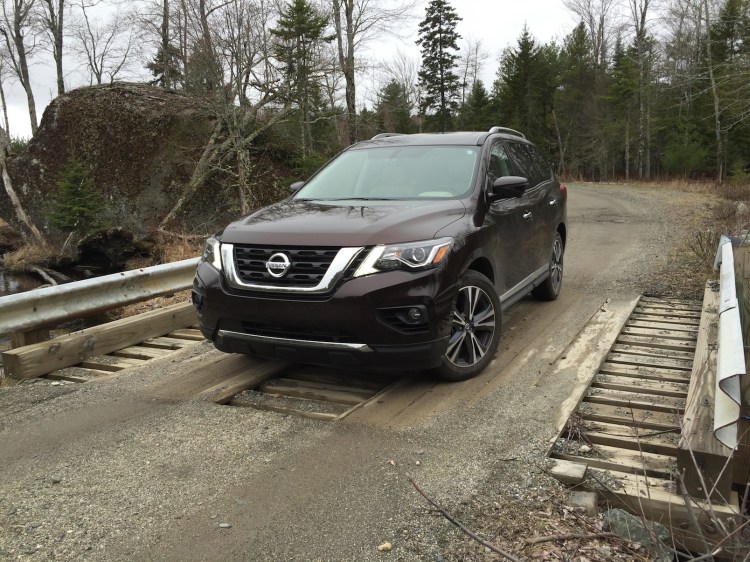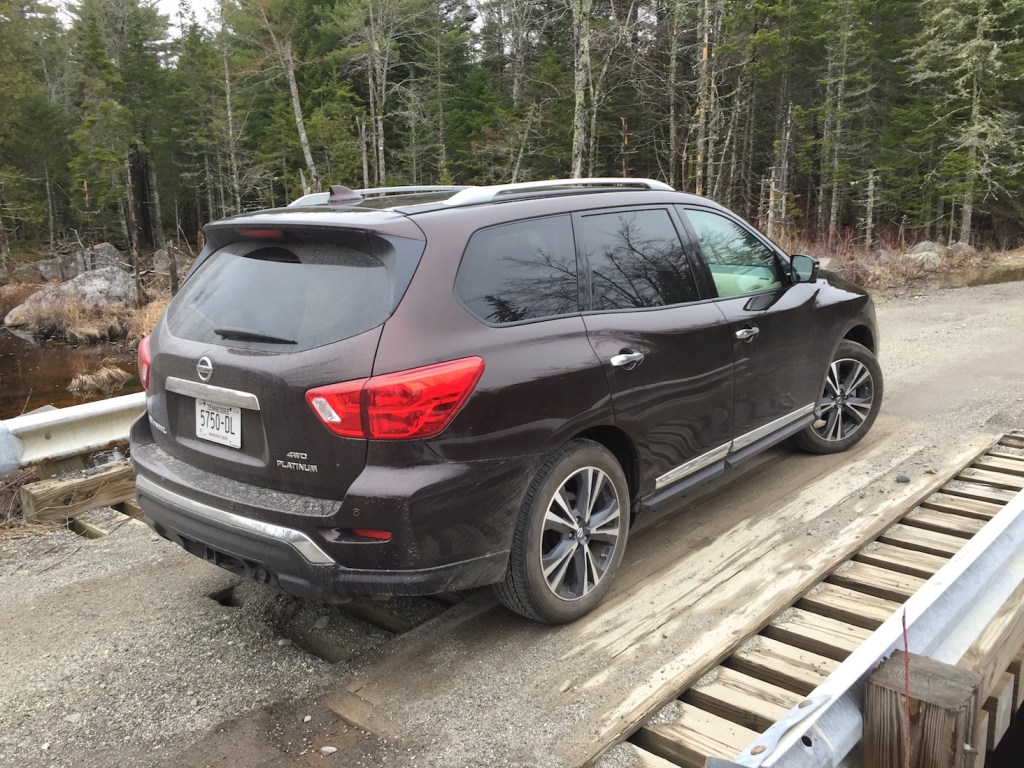Since buyers have long since forsaken more sensible front-drive minivans for three-row crossovers often equipped with AWD, one can imagine that the segment provides ample choices – with continuous upgrades, as dictated by the competition in this class.
Under these conditions, Nissan has given the Pathfinder only modest styling changes for 2019, plus some more standard pieces. This five-year-old design is, almost, the oldest offering in a class that includes – in order of sales – Ford Explorer, Toyota Highlander, Honda Pilot, Chevy Traverse, Nissan Pathfinder, and Dodge Durango. Plus the VW Atlas, the Mazda CX9 and the Hyundai Santa Fe.
Total sales last year: More than 1 million three-row family-sized crossovers slid out of showrooms. That number does not include luxury class offerings or truck-based three-row SUVs.
The latest Pathfinder continues on the Altima sedan’s front-drive-oriented chassis, although with a selectable AWD and lockable 4WD dial on the console. Unlike the first-generation Pathfinders – which were two-row, ladder-frame based SUVs – the current Pathfinder makes no pretenses about being an off-road, mountaineering type of crossover.
Riding on a 114-inch wheelbase (longer than most in this class) the Nissan delivers compliant ride dynamics, the sort of ride motions that passengers will enjoy for long journeys. Unfortunately, the person at the helm works with a decidedly uncommunicative steering wheel with handling motions that don’t encourage any extra-curricular activities behind the wheel.
Stable, placid, serene, with a hint of torque steer from the eager 3.5-liter V-6 – these are not only among the Pathfinder’s virtues, but also why many critics place the Nissan mid-pack in this segment.
Accommodations are generally very good. Our stocked Platinum model ($31,040 base, $44,600 as shown) featured heated front-and second-row leather seating with memory for the driver, triple-panel sunroof, power rear liftgate, premium audio, several electronic driving aids, and remote access and ignition.
An 8.0-touchscreen complements a plethora of controls and conventional buttons, which provokes some contrasting comparisons. A bank of buttons low to the left of the driver’s view tucked down on the dash is hard to see, while the navigation screen’s abundance of display detail is off-set by a convoluted process to access information and initiate destinations.
Apple and Android action are not available; a heated steering wheel is. The blue hi-beam lamp shines in the driver’s eye like an errant LED beam seeking a retina exam, while the info-tainment screen does not retain previous settings upon re-starts. Such an annoyance should no longer exist.
Conversely, the Pathfinder includes a standard warning system to alert drivers to check the rear seats for passengers upon exiting, and forward collision braking assist is standard regardless of which Pathfinder model you choose – S, SV, SL, or Platinum.
Under the hood is the corporate 3.5-liter V-6 engine that has seen use in everything from the 350Z sports car to the Maxima. Here, it is tuned to make 284 hp running through a CVT automatic that earns EPA mileage ratings of 20/27 mpg. Realized economy averaged 22 mpg.
At 199 inches long, the Pathfinder feels very much like an Asian version of the Dodge Durango – a rival almost the exact same size. Both have roomy and comfortable second-row seating, adequate third-row seating, and generous levels of equipment. The Nissan has almost the same tow rating as the heavier Dodge, 6,000 pounds, which is half-a-ton more than most rivals.
Curiously, each of these crossovers sells at about the same level year-in and year-out: 66,000 units moved last year for the Durango, 67,550 for the Nissan.
A solid middle-of-the-pack offering, the Pathfinder gains an edge with aggressive pricing backed by extensive features.
Not as nimble as its Infiniti sibling, the QX60, the Pathfinder does, however, represent a better crossover value that even offers selectable 4WD – even if you never leave the tarmac.
Send questions/comments to the editors.




